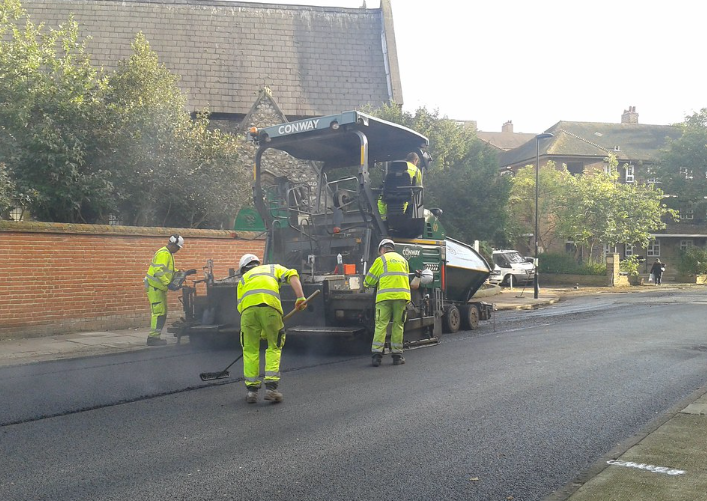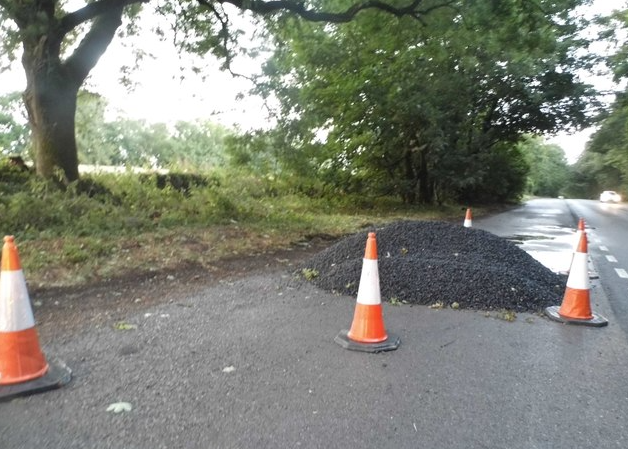Routine field maintenance activities include patching (potholes, full-depth repairs, skin patching, and crack sealing); road resurfacing using asphalt or slurry seal; and cleaning storm drains.
Road repair and road resurfacing contractors provide maintenance treatments to extend the life of roadways. Such treatments help stop further degradation of asphalt surfaces, reduce noise pollution, and provide better traction for vehicles.

Resurfacing
Asphalt roads cannot always remain in top shape, particularly in high-traffic areas where heavy vehicles frequently damage the surface.
Road resurfacing periodically can extend their expected lifespan significantly and save both money and time by decreasing or eliminating the need to repair surfaces.
Resurfacing typically begins with applying a thin, tar-like coating to the street’s surface to prevent water penetration into its underlying pavement and further structural problems. Next, these streets are resurfaced with fresh asphalt in one single treatment session—often within hours!
Patching
DPW offers patching treatments as an additional service that extends the lifespan of streets without needing costly resurfacing construction projects. This enables us to extend life cycles while saving costs associated with full-depth paving construction projects.
By applying asphalt emulsion mixed with rock and sand using equipment, a treatment that seals cracks, improves surface traction, and extends pavement life by up to seven years can be administered to damaged areas.
Residents living on streets scheduled for slurry sealing will be informed three to five days in advance via door hanger that parking restrictions will be implemented during this period of work, which usually takes a few hours to complete.
Milling
Milling can provide an economical solution for extensive street repair. By stripping away the existing asphalt layer and recycling its content back onto the street surface, milling provides a sustainable approach to road maintenance.
As well as traditional resurfacing treatments, the county has also utilised other effective and cost-efficient pavement preservation and rehabilitation methods, including rubberized asphalt concrete (AC) overlays, slurry seal applications, and cold-in-place recycling techniques.
As soon as a street resurfacing project is scheduled for your area, you will receive a notice with details and tips for safely traversing a construction zone. In some instances, temporary “no parking” signs may also be posted along its length.
Overlays
An asphalt overlay is a cost-effective solution to structural damage and offers excellent ride quality.
A tar-like tack coat is applied to the surface in order to adhere the existing asphalt layer to the new hot mix asphalt layer, which is then installed uniformly and compacted using steel rollers.
Concrete overlays can serve both practical and aesthetic functions. Broom-finished, coloured, or stamped to resemble other materials can all make up part of an overlay’s aesthetics; additionally, they’re great for patching cracks and pitting in concrete floors.
Adjusting Manhole Lids
Resurfacing roads often raises the upper edges of manhole housings above the new pavement surface, creating hazardous driving conditions and necessitating adjustments to manhole lids to match their roadway grade.
To achieve this task, the crew must locate manholes, clear away asphalt and any underlying material around them, locate manhole frames and cover castings, as well as install any necessary concrete collars.
Coring assemblies mounted to backhoes or excavators use special attachments to core the pavement around manholes to prepare for concrete collar pours. Numerous proprietary systems exist for this task.
Shoulder Work
Resurfacing streets provides a fresh layer of asphalt surface to protect underlying road structures, enhance ride quality, and extend roadway lifespan. Some streets also receive crack sealants beforehand to prevent water from entering through them and potentially leading to additional structural problems.
Resurfacing residential streets typically takes one or two weeks. Before construction begins, each resident will receive a flier outlining the schedule and giving tips for driving safely through work zones.

Herman is a film writer passionate about exploring the history of cinema, from Hollywood blockbusters to timeless classics. He specializes in providing in-depth reviews, behind-the-scenes insights, and thoughtful analyses of cinematic trends and iconic films.



